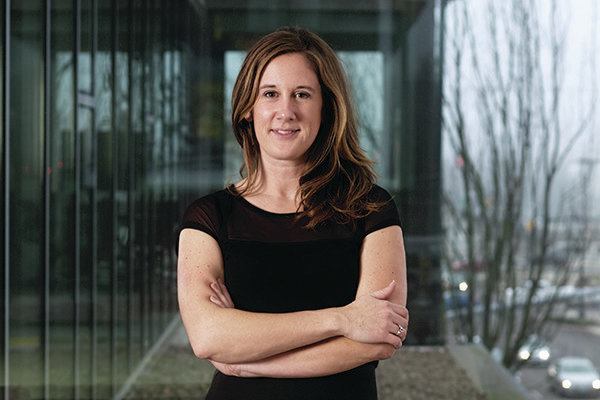Typically, women who own architecture firms do so in tandem with their architect husbands who they’ve been with since grad school. By contrast, Carrie Strickland, AIA, 39, met her business partner, William Neburka, 47, on what might be described as a professional blind date. A local developer named Brad Malsin thought they might be able to handle his adaptive reuse projects better than any existing team. “I had a project coming up that I thought would be potentially interesting for their collaboration,” Malsin recalls.
Strickland, then 27, was working for a small firm and had proved adept at helping Malsin negotiate Portland’s complex regulatory environment. “I barely knew [Malsin],” she says. “I barely knew the codes I was dealing with, but I just figured it out.” Malsin kept urging her to quit her job and start her own firm. She kept saying she’d like to but couldn’t do it alone. “He literally put his hand on my shoulder and said, ‘I know another architect.’ ”
In September 2004, Strickland and Neburka met at a Portland bar, the Aalto Lounge. By the time they’d finished their drinks, they’d discovered a shared enthusiasm for doing great design on limited budgets, and had agreed to quit their respective jobs. With the promise of Malsin’s commission as an incentive, they set up shop in 2005. “Then, of course, that big project that we left to start the office for—the client let it fall out of contract almost immediately after I’d given notice,” Strickland says. The project, the Olympic Mills Commerce Center, an $11 million refit of a 1920s cereal mill, soon came roaring back, however, and Works Partnership Architecture was born.
The firm has won myriad awards and has grown beyond what the two partners envisioned at the Aalto Lounge: “Bill and I had written on our bar napkin how many people we wanted to have in the office.” The number was 15, and they’re now up to 16 people. The pair works on every design together, Neburka says: “Our standard thing is that together we make one really good architect.”
On the question of gender, Neburka says that with his male architect friends, “there’s often a little bit of ego involved.” He continues: “While I don’t say our partnership is devoid of that, I think we have set all that stuff aside. I don’t know if that could happen as easily with a man.” When I ask Strickland if there’s a challenge to being a woman architect, she replies, “It’s kind of like being a left-handed boxer.” Because most boxers are right-handed, she says, “you’re going to be able to surprise somebody with a really great left hook.” She notes that while she’s feminine in appearance, favoring long hair and skirts, “I also drive a Ducati Monster and I curse a lot.”
Today, the bulk of their built work is commercial or mixed use. Their aesthetic is stripped down and industrial; they think of themselves as pragmatists. One of their most elegant buildings, BSide6, is a vastly updated version of the arcaded structures that gave one stretch of Portland’s east side its unique character. Their use of post-tensioned concrete gave the building thin floor slabs, allowing them to squeeze seven stories into an envelope that would normally contain six. Strickland doesn’t plan on designing the world’s tallest building, but she does have dreams: “I want to do a true high-rise tower in Portland”—something about 500 feet tall, roughly 200 feet taller than the city’s “squat” zoning envelope allows.
Other Emerging Women Architects:
Marianne Kwok, Director, Kohn Pedersen Fox Associates
Florencia Pita and Jackilin Hah Bloom, Partners, Pita & Bloom
